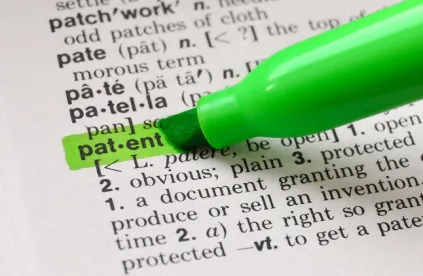Addressing the entirety of the evidence standard, the US Court of Appeals for the Federal Circuit affirmed a Patent Trial and Appeal Board finding that responsive evidence can be properly considered to demonstrate the public availability of a reference relied upon in an inter partes review (IPR) petition. VidStream LLC v. Twitter, Inc., Case Nos. 19-1734, -1735 (Fed. Cir. Nov. 25, 2020) (Newman, J.)
Youtoo Technologies sued Twitter for infringement of a patent directed to recording and publishing content on social media websites. In response, Twitter filed two IPR petitions challenging the asserted patent claims as obvious. The IPR petitions relied on a textbook (Bradford) as a primary reference in both petitions. Bradford was first published in 2011, but the copy provided with the petitions indicated a reprint date of 2015. The Board granted the IPR petitions and ultimately found all claims unpatentable over combinations of art including Bradford. VidStream, which emerged as the patent owner after Youtoo went through bankruptcy proceedings, appealed.
VidStream argued that the Board erred in accepting and considering evidence that Twitter provided for the first time with its replies, instead of considering only the documents that Twitter filed with its original petitions. Specifically, Twitter filed with its replies a copy of the US Copyright Office Certificate of Registration stating that Bradford’s date of first publication was November 8, 2011; a Library of Congress copy of Bradford; and a declaration by Twitter counsel that he had compared the excerpts of Bradford that were submitted with the petition with the same pages in the 2011 Library of Congress copy of Bradford and found them “identical.” VidStream stated that the Bradford pages filed with Twitter’s petitions were published December 13, 2015, and thus argued that Twitter did not show that these pages were available before the patent’s 2012 priority date. VidStream maintained that the Board erred in considering Bradford in the obviousness combinations.
The Federal Circuit noted that VidStream had challenged the proper priority date of Bradford before the Board and had also filed a motion to exclude Bradford as improper evidence. The Board denied VidStream’s motion to exclude, finding that it was appropriate to permit Twitter to respond to VidStream’s challenge by providing additional evidence to establish the Bradford publication date. In line with its 2018 Nobel Biocare Servs. AG v. Instraden USA Inc. and Anacor Pharm. decisions, the Court found that the responsive evidence supported the Board’s finding that Bradford was published and publicly accessible before the patent’s priority date. Like the Board, the Court considered the entirety of the evidence relevant to a determination of printed publication. For example, the ISBNs of the 2011 and the 2015 printings of Bradford were the same, and a Machine-Readable Cataloging record had been created for Bradford in August 2011. Bradford was also printed by an established publisher, and the internet archive included an Amazon webpage for Bradford, further confirming that Bradford was publicly accessible in 2011 and that interested persons could access and order the book in hard copy or electronically. The Court was also persuaded that the Board acted appropriately because the Board permitted both sides to provide evidence concerning the reference date of the Bradford book.
Because VidStream did not challenge the Board’s decision of obviousness if Bradford were available as a reference, the Court affirmed the Board’s unpatentability finding.



 />i
/>i

